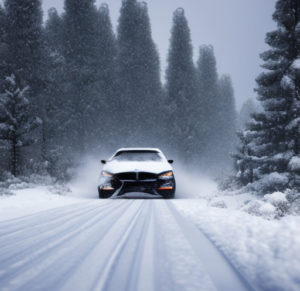 Winter Driving Safety Tips
Winter Driving Safety Tips
When confronted with winter weather, drivers encounter unique challenges on the road. Approximately one in four weather-related vehicle crashes involve snow, slush, or icy conditions, factors that contribute to decreased visibility, reduced stopping ability, and an increased risk of accidents.
For those compelled to travel during winter weather, proactive measures such as preparing your vehicle, staying informed about the forecast, and adapting your driving to road conditions become crucial for safety. Here are essential winter driving tips to ensure you’re well-prepared before hitting the road.
Preparing Your Vehicle:
As temperatures plummet, it’s essential to equip your car with a winter survival kit comprising an ice scraper, snow shovel, and sand or road salt. This preparation ensures you’re ready for unforeseen winter weather away from home. Regularly check your tires to assess whether replacements or snow tires are necessary.
Establishing certain habits during the winter months also contributes to preparedness. Maintain your windshield wipers in optimal condition and keep the windshield fluid reservoir filled for effective snow and ice removal. Always ensure a full gas tank to run your engine for warmth in case of being stranded. Additionally, maintaining a full tank minimizes water vapor in the tank, preventing freezing in cold temperatures. Consider using a garage, fuel additives like dry gas, and periodically running your car in a well-ventilated area to prevent a dead battery.
Watching the Weather:
When planning travel during potentially inclement weather, stay updated on road and weather conditions through local news, internet traffic, and weather sites. Subscribe to weather alerts for timely notifications via text messages, but refrain from checking your phone while driving to avoid distractions.
Driving for Winter Conditions:
Before setting out, take the time to thoroughly clear snow and ice from your car, including windows, mirrors, lights, reflectors, hood, roof, and trunk. Drive with headlights on, maintaining their cleanliness for improved visibility. Adjust your speed to accommodate snow and ice-covered roads, and increase your following distance as conditions worsen. Avoid using cruise control and exercise caution on bridges and overpasses, which tend to ice over quickly. Refrain from passing snow plows and sand trucks due to potential limited visibility for their drivers.
Breaking Down or Getting Stuck:
In the event of being caught in a snowstorm or getting stuck, stay in your car if it’s safely positioned. Run the car heater for 10 minutes every hour, ensuring the exhaust pipe is clear of snow to prevent carbon monoxide buildup. Open a window slightly for ventilation.
Driving in winter demands heightened attention, even for experienced drivers. Slow down, increase stopping distances, wear your seatbelt, and remain focused on the road to navigate changing conditions safely. If your route includes remote areas with limited cell phone coverage, inform a third party of your travel plans, providing details of your route and estimated arrival time. This precaution ensures that if you’re overdue, first responders know where to begin their search. When uncertain about driving safety, consider waiting until road conditions improve.
